Abstract
Spirometry before and after an inhaled beta agonist or a course of oral prednisolone is widely used to detect reversible airflow limitation in patients with chronic obstructive lung disease. How many of these patients have a response and how the response to beta agonists relates to the response to corticosteroids is not clear. In 127 outpatients (mean (SD) FEV1 0.92 (0.38) 1) who had a clinical diagnosis of chronic obstructive lung disease (continuous breathlessness for more than six months and an FEV1/forced vital capacity (FVC) ratio less than 60%) and who appeared to be stable, the change in FEV1 was measured after salbutamol 200 micrograms from a metered dose inhaler and 5 mg from a nebuliser. Symptoms and spirometric values were recorded before and after two weeks of oral prednisolone 30 mg. Reversibility was defined as a response in FEV1 of 15% or more from baseline alone and as a 15% change and a minimum increase of at least 200 ml. The latter gave results that showed greater internal consistency between the drug regimens. On the basis of this criterion 56 patients (44%) had no response to salbutamol or prednisolone, 71 responded to salbutamol (including all 27 steroid responders), and 25 patients had a response to salbutamol 5 mg but not to 200 micrograms. In general, the largest increase in FEV1 after salbutamol occurred in the subjects with greatest improvement after prednisolone. Subjects showing a response in FEV1 after two weeks' prednisolone had a fall in total symptom score, unlike those who had no response to any treatment or a response to salbutamol only. These data show that reversibility in response to beta agonists is common in patients diagnosed on clinical grounds as having stable chronic obstructive lung disease, that it can be substantial, and that it is best detected by using a larger dose of salbutamol. Salbutamol responders were those most likely to improve after a trial of oral prednisolone. Allowance should be made for the variability of FEV1 in the calculation of the percentage response at low baseline values (less than 1 litre).
Full text
PDF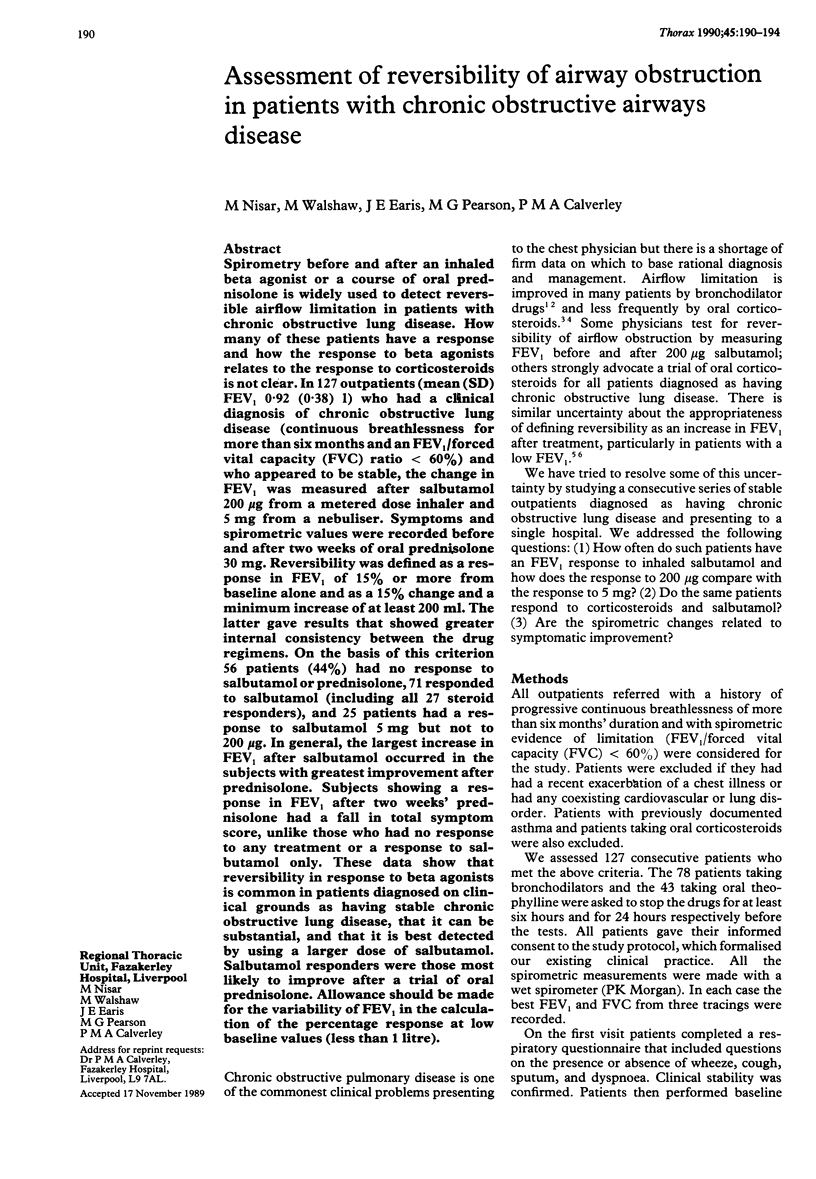
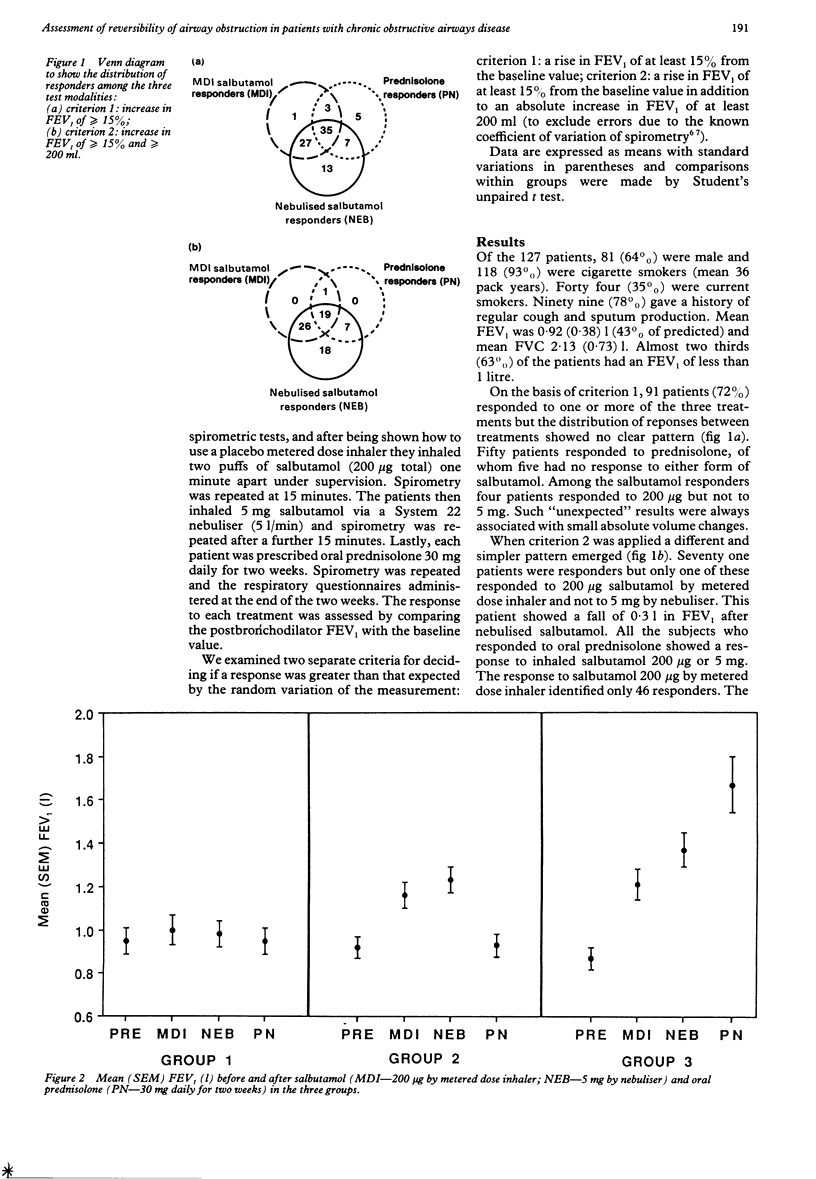
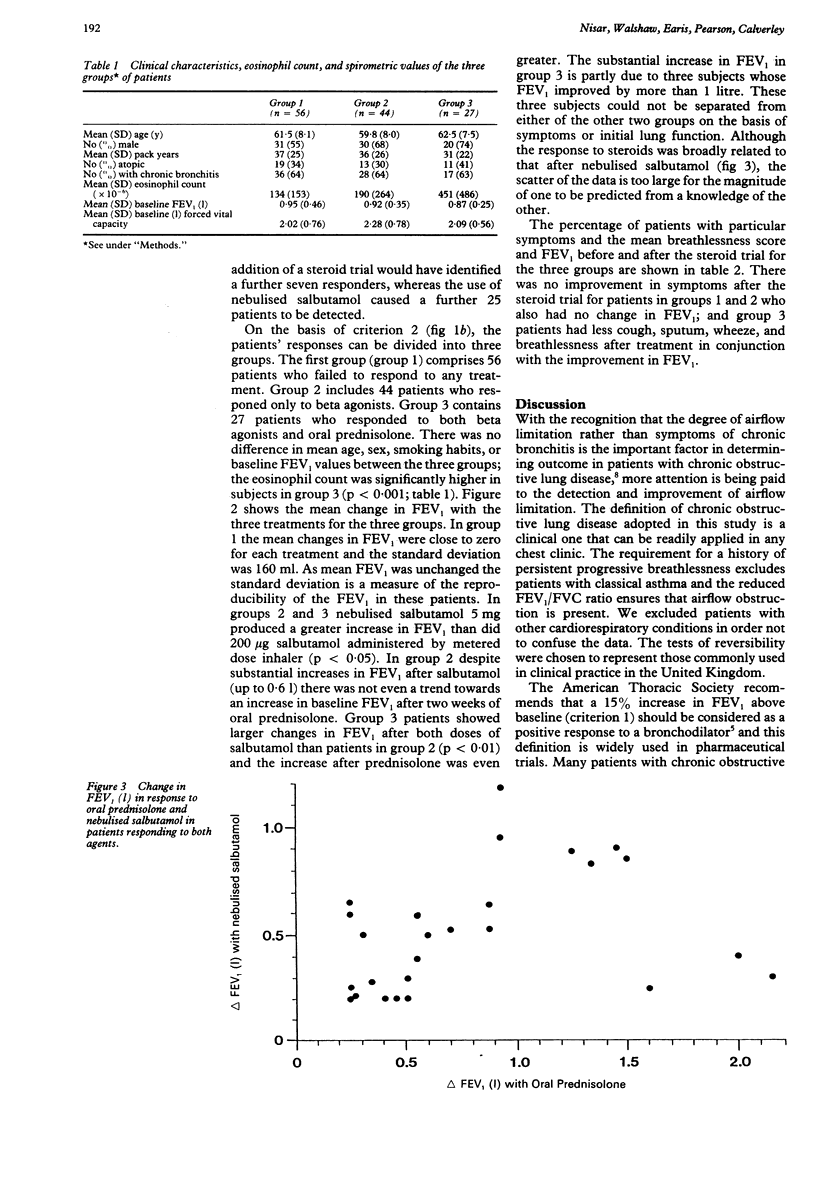
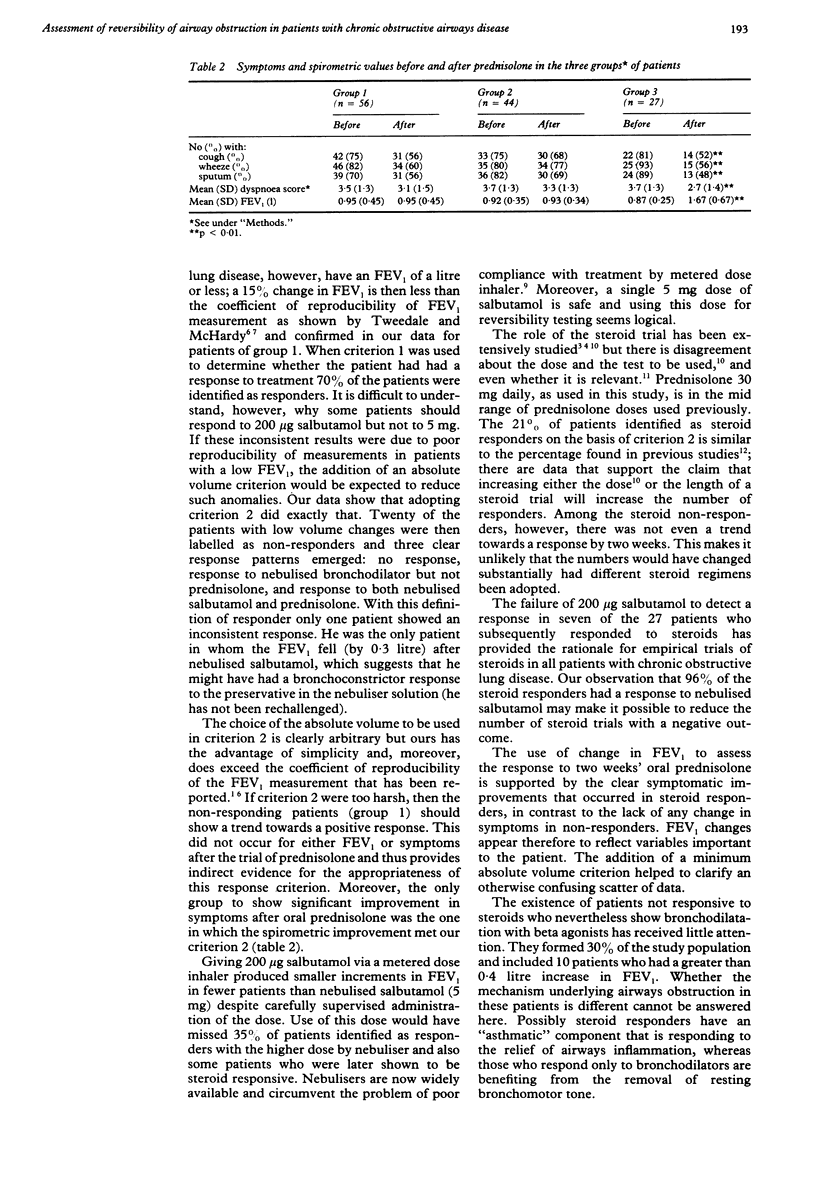
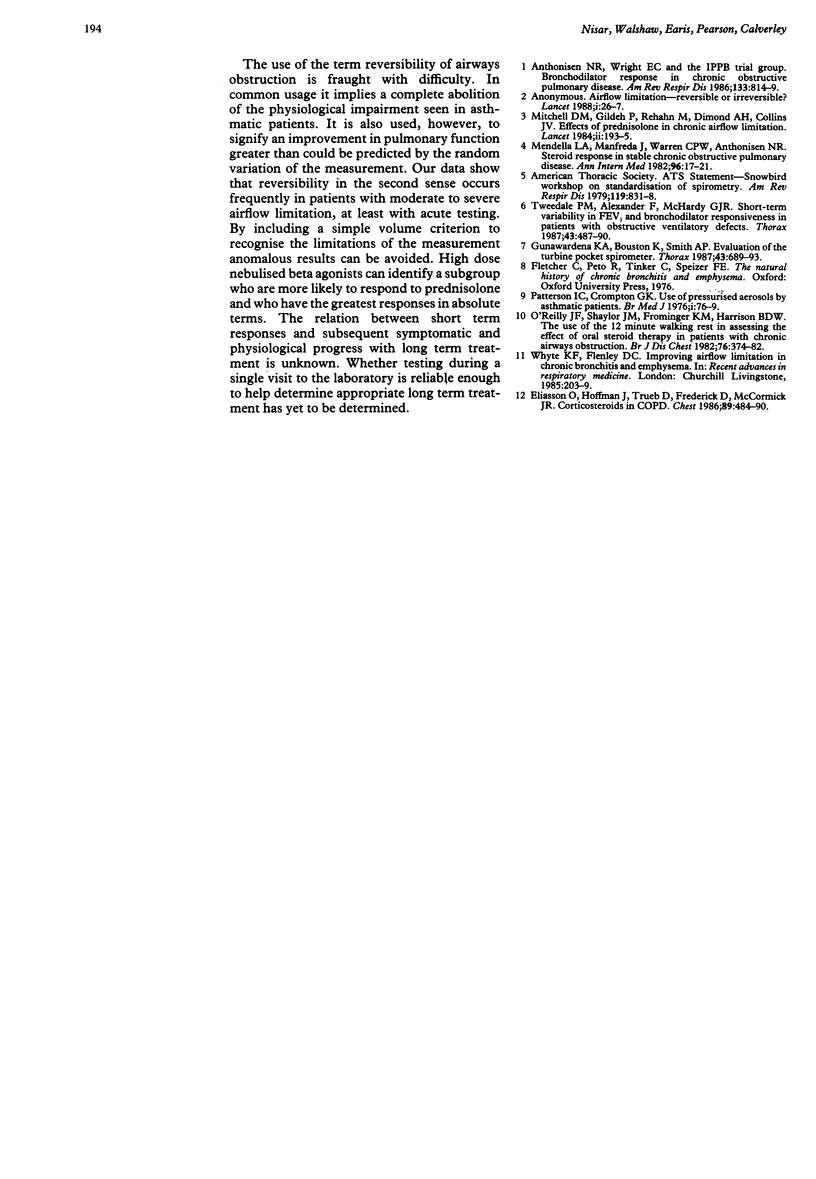
Selected References
These references are in PubMed. This may not be the complete list of references from this article.
- Anthonisen N. R., Wright E. C. Bronchodilator response in chronic obstructive pulmonary disease. Am Rev Respir Dis. 1986 May;133(5):814–819. [PubMed] [Google Scholar]
- Eliasson O., Hoffman J., Trueb D., Frederick D., McCormick J. R. Corticosteroids in COPD. A clinical trial and reassessment of the literature. Chest. 1986 Apr;89(4):484–490. doi: 10.1378/chest.89.4.484. [DOI] [PubMed] [Google Scholar]
- Gunawardena K. A., Houston K., Smith A. P. Evaluation of the turbine pocket spirometer. Thorax. 1987 Sep;42(9):689–693. doi: 10.1136/thx.42.9.689. [DOI] [PMC free article] [PubMed] [Google Scholar]
- Mendella L. A., Manfreda J., Warren C. P., Anthonisen N. R. Steroid response in stable chronic obstructive pulmonary disease. Ann Intern Med. 1982 Jan;96(1):17–21. doi: 10.7326/0003-4819-96-1-17. [DOI] [PubMed] [Google Scholar]
- Mitchell D. M., Gildeh P., Rehahn M., Dimond A. H., Collins J. V. Effects of prednisolone in chronic airflow limitation. Lancet. 1984 Jul 28;2(8396):193–196. doi: 10.1016/s0140-6736(84)90481-1. [DOI] [PubMed] [Google Scholar]
- O'Reilly J. F., Shaylor J. M., Fromings K. M., Harrison B. D. The use of the 12 minute walking test in assessing the effect of oral steroid therapy in patients with chronic airways obstruction. Br J Dis Chest. 1982 Oct;76(4):374–382. doi: 10.1016/0007-0971(82)90073-0. [DOI] [PubMed] [Google Scholar]
- Paterson I. C., Crompton G. K. Use of pressurised aerosols by asthmatic patients. Br Med J. 1976 Jan 10;1(6001):76–77. doi: 10.1136/bmj.1.6001.76-a. [DOI] [PMC free article] [PubMed] [Google Scholar]
- Tweeddale P. M., Alexander F., McHardy G. J. Short term variability in FEV1 and bronchodilator responsiveness in patients with obstructive ventilatory defects. Thorax. 1987 Jul;42(7):487–490. doi: 10.1136/thx.42.7.487. [DOI] [PMC free article] [PubMed] [Google Scholar]


